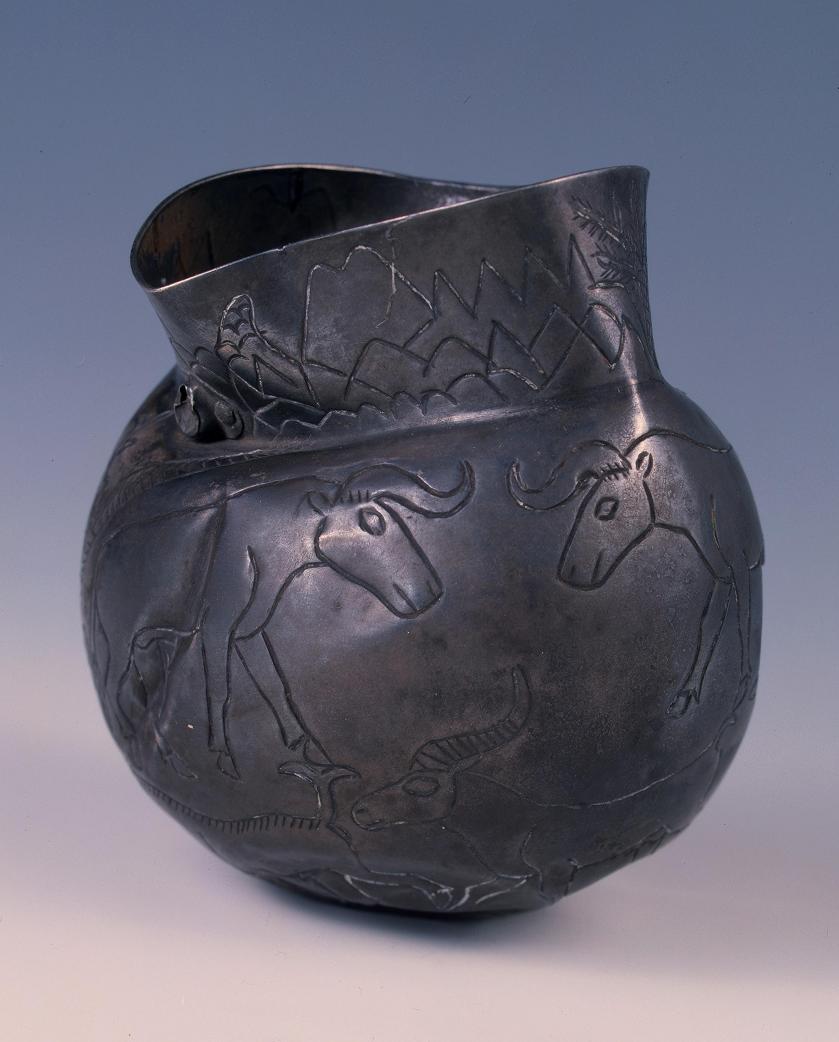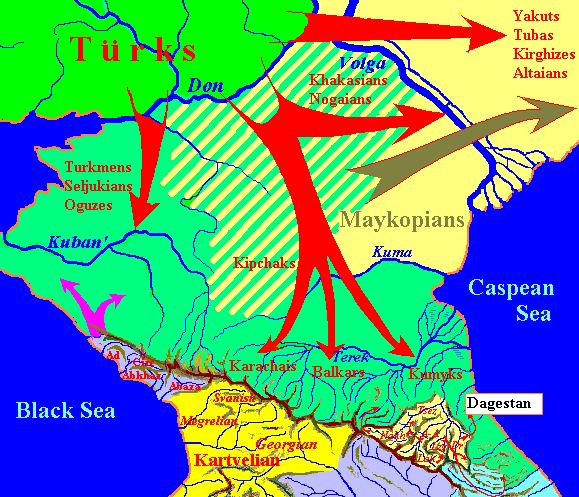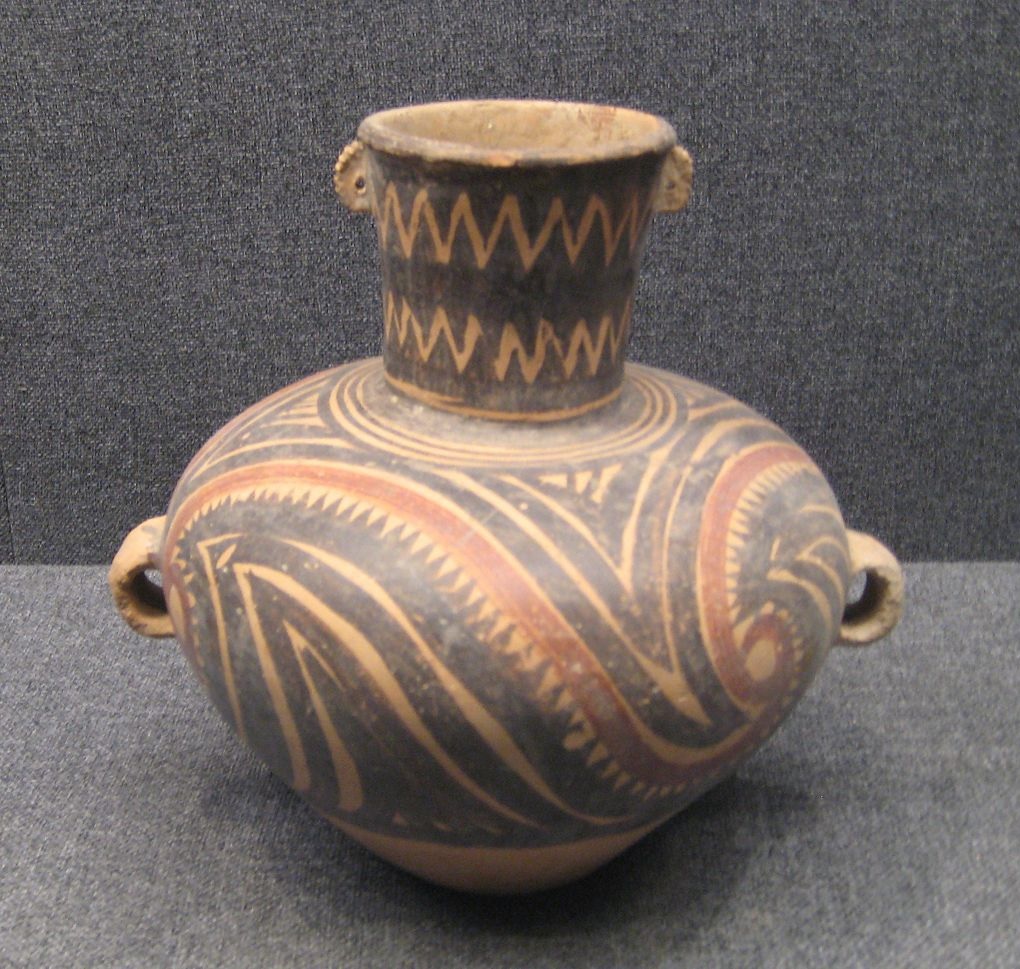Maykopian Enigma
Afanasiev culture existed from the middle of the 3rd till, the beginning of the 2nd mill BC in a large area, which included, the Altai, also Mongolia, and Xinjiang. We can assume that a part of the Maykopians through the Dzungarian Gates entered the territory of Xinjiang, where they met people of Mongoloid type, standing on the lower level of cultural development. The newcomers brought tribal organization, the technology of bronze, animal husbandry, and agriculture. Obviously, the arrival of the Maykopians to China impacted the creation of the Shang State in the 18th cen BC. Mingling with the autochthonous and becoming Mongoloid features, the Maykopians also learned the language of the local population but made on it a big impact. The traces of the influence of the Maykopian language are visible now in the Sino-Tibetan languages, and this influence was so significant that suggests the genetic relationship between the North Caucasian and Sino-Tibetan languages.

The result by of the graphic-analytical method the models of Caucasian languages suggests that they were formed in the valleys of the Great Caucasus mountain range, that is the ancestors of present-day speakers of the Abkhaz-Circassian and Dagestan- Nakh language groups were native settlers in their present territories, and their common language could ever be one of the dialects of Proto-Nostratic.
At left:Silver vessel decorated with landscape from Myakop Barrow (Oshad Barrow).
The State Hermitage Museum. Russia.
Assumpting such possibility, we can think that at the time of migration of the speakers of Nostratic languages from the Near East to Eastern Europe the slopes of the North Caucasus and the steppes of Ciscaucasian plains also have been settled by some ethnic group akin to the Caucasians. That is why the Indo-Europeans, Urals, and Turks had to move further north. For the same reason the ancestors of the Nakh and Dagestan people remained in the mountains of Dagestan, and not settled on the plain on the banks of the rivers Terek, Kuma, Kuban. Data to judge about the disappeared language of that ethnic group are absent but we can make certain assumptions with regard to the presence of common features between the Sino-Tibetan and North Caucasian languages established by linguists. Russian scientist Sergey Starostin even suggested that the Sino-Tibetan and Caucasian languages have a common ancestor, and combined them into one monophyletic group of the Sino-Caucasian languages. His hypothesis has not found wide support in the scientific world, but the facts of the similarities between the Sino-Tibetan and Caucasian languages require an explanation, and we can try to find it.

We know that a culture of the Earle Bronze Age called Maykopian was spread in the Fore Caucasia and the North Caucasus in the 4th millennium BC. We will take the name of this culture as code name "Maykopians" for the people living in Caucasia and speaking a language akin to the North Caucasian, the most geographically close languages. Craniological research on skulls of Maikop culture people showed that they "are different from all groups of synchronous and later steppe and forest-steppe population of Eastern Europe"(KAZARNITSKIY A.A. 2010: 154). The Maikopians were not connected genetically with neighboring people of Pit culture which we recognized as the Turks. There are signs of a craniological complex of the Maikopians close to synchronous populations of South Turkmenistan. This and other facts allow concluding the following:
… taking into account the peculiarity of "Maikopians" in Eastern Europe and a slight resemblance to Caucasians of the southern Caucasus and Central Asia, as well as the well-known attraction of the material culture of the Maikop-Novosvobodnensk community to the Middle East [Munchayev, 1994, p. 170], the origin of the carriers of the Maikop culture can be attributed with a known degree of conditionality to the territory of Asia Minor (ibid, 155).
If this assumption is true, the Maikopians were to populate North Caucasus before the migration in Eastern Europe of the speakers of the Nostratic languages. Taking into account the localization of the ancestral home of the Sino-Tibetan languages in Southwest Asia, we can not exclude that the Maikopians were Mongoloids.
Mass Turkic expansion in all directions from the Urheimat on the territory between the Dnieper and Don began near the end of the third mill. BC. In Europe, this expansion has been associated with the spread of the Corded Ware culture. Some Turkic tribes moved north-eastward to the Volga basin. Their descendants are known today as Volga Tatars. Most of the Turkic peoples crossed the Don and has spread on Sal'sk steppes and in the Fore Caucasia. They replaced the indigenous Maykopians across the Volga to the desolate lands of Kazakhstan. Some Turkic tribes (including the Kipchaks, Seljuks, Oghuz, and Turkmen), may have settled in the North Caucasus, but most of the Turks followed the Maykopians. The Turks and Maykopians moved to the east and south-east at the same time, but the Maikopians always remained to the south of the Turks. Their path can be traced by the Andronov culture and culture Zamanbaba created by people of European appearance who came from the West, as is proved by archaeologists.
Since the end of 3rd mill. BC in Mongolia clearly reveals two major ethnic communities. One of them represented the Mongolians, the other did Caucasians (NOVGORODOVA E.A., 1981: 214). The last may be linked to the Maikopian tribes, which moved ahead of the Turks in the direction of the Altai, where they became the creators of the Afanasiev culture of the Bronze Age. Experts attribute its creation to the wave of the Late-Pit and Catacomb population, which went from the Ural far to the east (KUZ'MINA E.E., 1986: 186.) This culture existed from the middle of the 3rd till the beginning of the 2nd mill BC in a large area, which included, besides the Altai, Mongolia, and Xinjiang. We can assume that a part of the Maykopians entered through the Dzungarian Gate the territory of Xinjiang, where they met people of Mongoloid type, standing on the lower level of cultural development. The newcomers brought tribal organization, bronze technology, skills in animal husbandry, and agriculture. Obviously, the arrival of the Maikopians to China served as a major impetus to the creation of the State Shang in the 18th cent BC. Mingling with the autochthonous and getting Mongoloid features, the Maykopians also learned the language of numerous local populations but by helping it a big impact. Traces of the influence of the Maykopian language are now visible in the Sino-Tibetan languages, and this influence was so significant that suggests a genetic relationship between the North Caucasian and Sino-Tibetan languages, but in fact, we can talk about kinship.

Left: Painted jug from the Banshan culture
Photo from Wikipedia
A group of Neolithic cultures of China Yangshao has a version"Banshan" with characteristic painted pottery of the period 2500-2000 BC. There are extensive cemeteries on the hills of the upper Yellow River basin in Kansu province which yielded great quantities of the pottery with inhumation burials. Large globular urns painted with bold spirals or other curved lines or other curvilinear designs or lozenges in red, black, purple, or brown.

Right: Trypillian pottery
There are geometric patterns or stylized figures of man, fish, and birds; burnish is absent. Handles are set low on the body of the urns, and the lower part of the body remains without decoration – as in most Greek funerary dishes, being like them. Striking parallels to that pottery have been found in Turkestan, the Caucasus, and Ukraine (cf. jugs of Banshan and Tripoli culture on pictures). Reasons for similarities still do not have an explanation. We can assume that the style and technology of ceramics brought Maikopians. However, the similarity of the Maikopian and Trypillian clay-ware also has to be explained.

